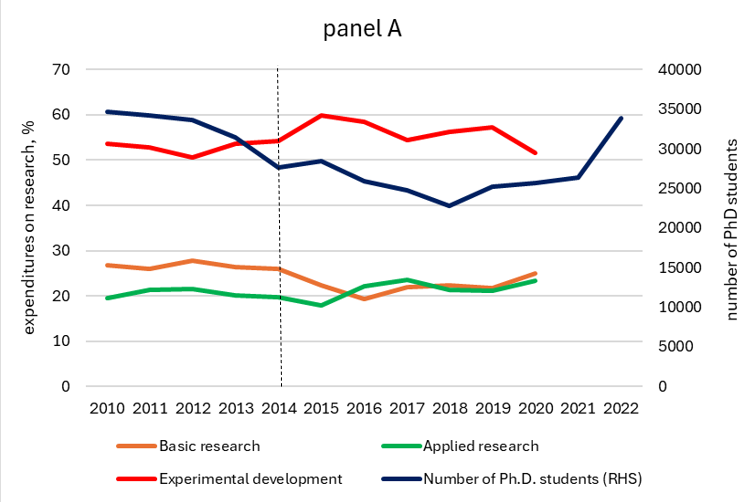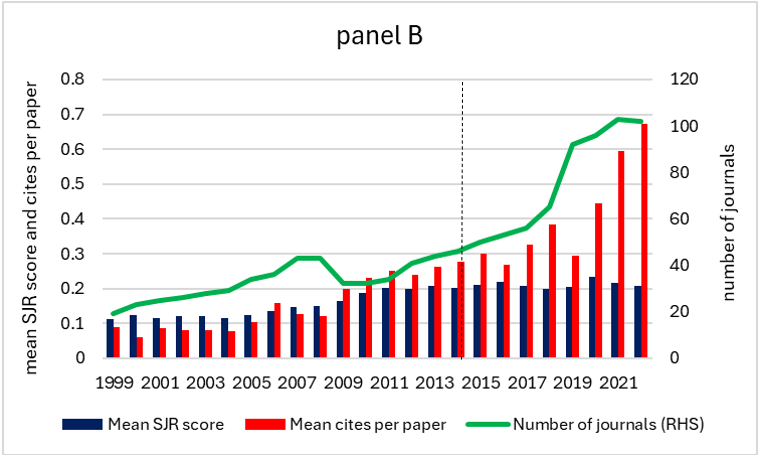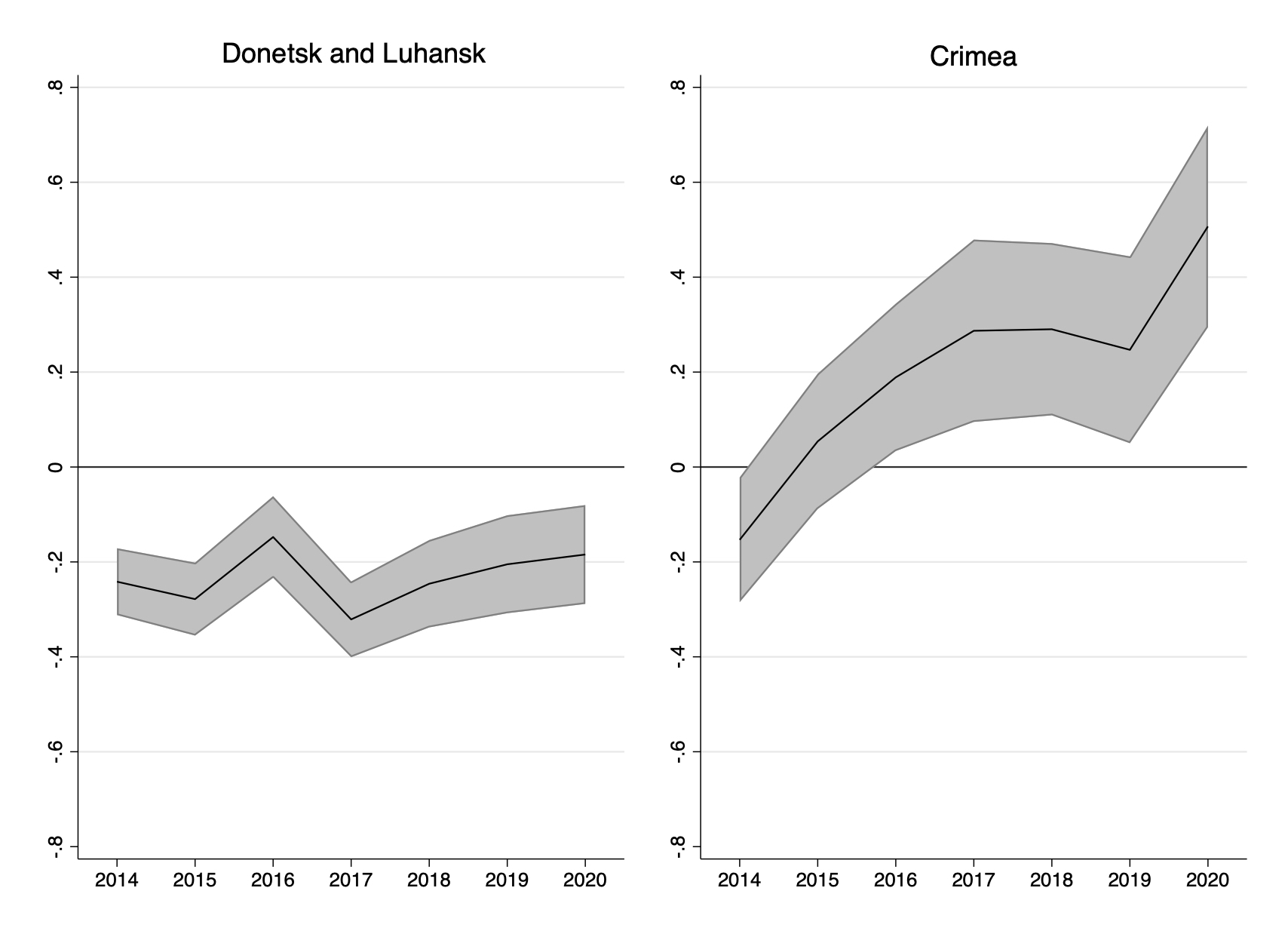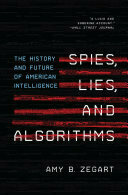Russia’s aggression against Ukraine has triggered immense destruction, human suffering, and institutional disruption. Much has been written about the effects of war on infrastructure and industry. Less attention, however, has been paid to its impact on the knowledge economy.
In a recent study, we examine how the 2014 Russian invasion affected the research productivity of Ukrainian scholars (Guariglia et al., 2025). The results highlight the fragility of national academic systems in the face of territorial conflict—and their uneven capacity to adapt under stress.
The relationship between conflict and academic activity has long been a concern in the political economy of war. Existing literature documents how armed conflict disrupts higher education through displacement, funding cuts, and institutional collapse (Becker and Ferrara, 2019; Iaria et al., 2018). At the same time, certain wars have been associated with bursts of scientific innovation—particularly in military or medical domains (Ruttan, 2006; Gross and Sampat, 2023). The net impact depends on the type of conflict, institutional resilience, and the direction of public investment.
Using publication and citation data from the Scopus database, we follow more than 21,000 researchers affiliated with Ukrainian institutions from 2004 to 2023. By applying a difference-in-differences design and machine learning estimators, we isolate the causal effects of war on research productivity—measured in both quantity and quality.
A key part of our empirical strategy is the geographical classification of affected regions. The treatment group consists of researchers affiliated with institutions in Donetsk, Luhansk, and Crimea that did not relocate after the Russian invasion and experienced either occupation or annexation in 2014. The control group includes the remaining regions of Ukraine, which were not directly exposed to military conflict during this period. This spatial contrast enables us to isolate the impact of war and occupation from broader national trends in research output.
These regional differences unfolded against the backdrop of broader structural changes in Ukraine’s research ecosystem, many of which are illustrated in Figure 1 of our study. After 2014, research funding shifted even more heavily toward experimental development, with basic and applied research each receiving only around a quarter of total R&D expenditure. At the same time, the number of PhD students dropped sharply until 2018, then rebounded in 2022—possibly driven by increased interest in defense and energy technologies or as a means of deferring military conscription. The number of Ukrainian journals grew steadily, though their average quality (measured by the SJR index and the number of citations) remained flat. At the same time, citations per paper increased, suggesting growing recognition of certain research outputs. However, the average SJR score of international journals in which Ukrainian researchers published fell to its lowest level around 2020, and the average number of co-authors per paper declined as well—both clear signs of weakened global integration and reduced collaboration capacities. Together, these patterns point to a research system under stress, with limited resources and disrupted networks. Yet there were also some signs of resilience and adaptation, particularly in areas less directly affected by conflict.
Figure 1. Categories of research expenditure, number of PhD students, and research output characteristics in Ukraine over time



Notes: Panel A presents data on research expenditure and the number of PhD students in Ukraine over time. Expenditures on different types of research (basic, applied, and experimental development) as a share of the total expenditure on research are plotted on the left vertical axis. The number of PhD students is plotted on the right vertical axis. Panel B presents characteristics of journals published in Ukraine over time. The mean SJR score of the journals and the mean number of citations per paper are displayed on the left vertical axis, while the number of journals is on the right vertical axis. Panel C presents the mean number of co-authors of papers published (left axis) and the average SJR score of the (worldwide) journals in which authors affiliated with Ukrainian institutions published (right axis). The dashed vertical lines are set at 2014.
Source: State Statistics Service of Ukraine (2023), Scimago (2023), Scopus (2023).
Figure 2 shows that research productivity rose steadily across all Ukrainian regions until 2014, after which the war caused a sharp decline—most notably in Crimea and the war-affected Donetsk and Luhansk regions. While Crimea quickly rebounded, likely due to increased Russian funding after illegal annexation, publication levels in the war regions dropped significantly and then stabilized at a much lower level.
Figure 2. Average number of published papers per author

Notes: The Figure plots the average number of published papers per author for authors affiliated with institutions/universities based in Crimea; Donetsk and Luhansk; the bordering regions (i.e., Kharkiv, Zaporizhzhia, Dnipro, and Kherson); and the entire Ukraine, excluding Donetsk, Luhansk, and Crimea.
Source: Scopus (2023).
Our main results show that researchers affiliated with institutions in the occupied parts of Donetsk and Luhansk saw their average publication output fall by over 20% after 2014, relative to control regions. The average number of citations per researcher also declined, indicating reduced global impact. Estimates using R-learners and X-learners (Künzel et al., 2019; Nie and Wager, 2021) suggest even larger drops—up to 45% in some cases.
A dynamic analysis of publication trends confirms these patterns and reveals their persistence (see Figure 3). The analysis shows a clear and sustained drop in scientific output from the occupied regions of Donetsk and Luhansk beginning in 2014 and extending through at least 2020. In contrast, the annexation of Crimea triggered only a temporary decline in 2014, followed by a steady and statistically significant rebound in publication output starting in 2016. This divergence highlights how the presence of active hostilities versus administrative annexation yields markedly different trajectories for research performance.
Figure 3. Dynamic DiD effects of the war on the number of published papers in the occupied parts of the Donetsk and Luhansk regions (left-hand-side panel) and Crimea (right-hand-side panel)

Notes: This Figure plots the effects of the war on papers published in different years by authors affiliated with institutions in the occupied parts of the Donetsk and Luhansk regions (left-hand-side panel) and Crimea (right-hand-side panel). The figure is based on coefficients obtained from fixed-effects DiD estimates of a regression where the dependent variable is the number of published papers and the treatment effect is measured by the interactions between Treatment status and the year 2014 as well as the subsequent years. The bordering regions (Kharkiv, Zaporizhzhia, Dnipro, and Kherson) make up the control group. Relevant confidence intervals are also reported. All regressions include author and year fixed effects.
Beyond these regional structural patterns, we also observe important variation across researcher profiles (Figure 4). More specifically, senior scholars and those who had previous research ties with Russia experienced the largest declines in output. In occupied Crimea, the gains in publication numbers were mainly driven by junior and mid-career researchers, not by leading scientists.
Figure 4. Effects of the war on different types of researchers
Notes: The Figure plots fixed-effects estimates of the DiD coefficients, together with the relevant confidence intervals, of a regression where the dependent variable is the the number of papers published by Ukrainian scientists differentiated by categories, together with the relevant confidence intervals. In the left-hand-side panel, the treatment group includes the occupied parts of Donetsk and Luhansk. In the right-hand-side panel, it is Crimea. In both panels, the control group comprises all unoccupied regions of Ukraine. All regressions include author and year fixed effects.
Moreover, in Crimea, where fighting was minimal but administrative control shifted to Russia, research activity increased—at least on paper. This rise was largely driven by low-impact publications in Russian-language journals, many of which are not indexed internationally. When these journals are excluded from the sample, the post-2014 productivity bump disappears. This redirection of research away from international outlets and into Russian-affiliated venues suggests not recovery, but rather strategic realignment under occupation (Ganguli and Waldinger, 2024).
These shifts are consistent with broader findings on how political realignment alters academic incentives. Researchers in annexed or occupied areas may maintain publishing volume, but their integration into global science networks deteriorates. The results suggest that science under authoritarian or militarized systems tends to become more insular and less impactful—a finding echoed in historical studies of Nazi-era Germany and Cold War Eastern Europe (Becker et al., 2024; Iaria et al., 2018).
Our findings offer three main takeaways for policy and research.
First, the impact of war on science is deeply unequal. Regions exposed to direct conflict experience large, persistent losses in research capacity, while those under occupation may see redirected productivity with diminished quality. This duality complicates efforts to assess national trends using aggregate indicators.
Second, scientific networks are not easily rebuilt. Fragmentation in co-authorship, loss of experienced researchers, and disconnection from global journals leads to long-term damage to innovation ecosystems.
Third, recovery requires more than reconstruction. Policies aimed at restoring Ukraine’s academic system must go beyond rebuilding buildings. They must re-establish professional networks, support displaced scientists, and realign incentives toward high-quality, internationally recognized research. International support—in the form of funding, institutional partnerships, and mobility programmes—will be critical.
In sum, war reshapes science—not only by destroying capacity but by redirecting it, isolating it, and reprioritizing its goals. As Ukraine rebuilds, restoring its research capacity should be viewed not just as a scholarly concern, but as a cornerstone of national recovery.
References
- Becker, S. O., & Ferrara, A. (2019). Consequences of forced migration: A survey of recent findings. Labour Economics, 59, 1–16.
- Becker, S. O., Lindenthal, V., Mukand, S., & Waldinger, F. (2024). Prosecutions and escape: Professional networks and high-skilled emigration from Nazi Germany. American Economic Journal: Applied Economics, 16(3), 1–43.
- Ganguli, I., & Waldinger, F. (2024). War and science in Ukraine. Entrepreneurship and Innovation Policy and the Economy, 3(1), 165-188.
- Gross, D. P., & Sampat, B. N. (2023). The World War II crisis innovation model: What was it, and where does it apply? Research Policy, 52(9), 104845.
- Guariglia, A., Nikolsko-Rzhevskyy, A., Talavera, O., & Zadorozhna, O. (2025). Research productivity during the Russian war in Ukraine. Public Choice, 1-25.
- Iaria, A., Schwarz, C., & Waldinger, F. (2018). Frontier knowledge and scientific production: Evidence from the collapse of international science. Quarterly Journal of Economics, 133(2), 927–991.
- Künzel, S. R., Sekhon, J. S., Bickel, P. J., & Yu, B. (2019). Metalearners for estimating heterogeneous treatment effects using machine learning. Proceedings of the National Academy of Sciences, 116(10), 4156–4165.
- Nie, X., & Wager, S. (2021). Quasi-oracle estimation of heterogeneous treatment effects. Biometrika, 108(2), 299–319.
- Ruttan, V. W. (2006). Is war necessary for economic growth? Military procurement and technology development. Oxford University Press.
Photo: depositphotos.com/ua
